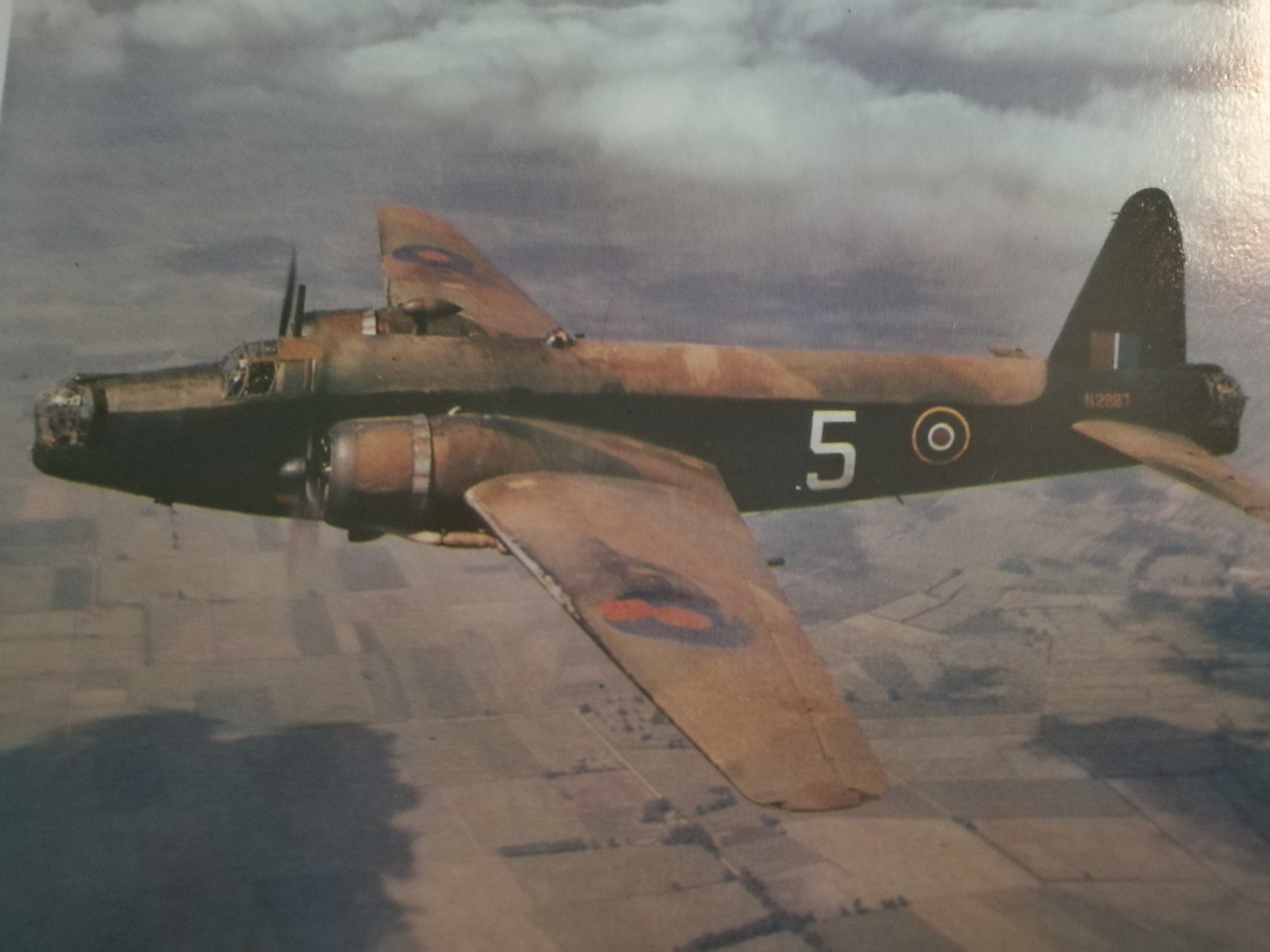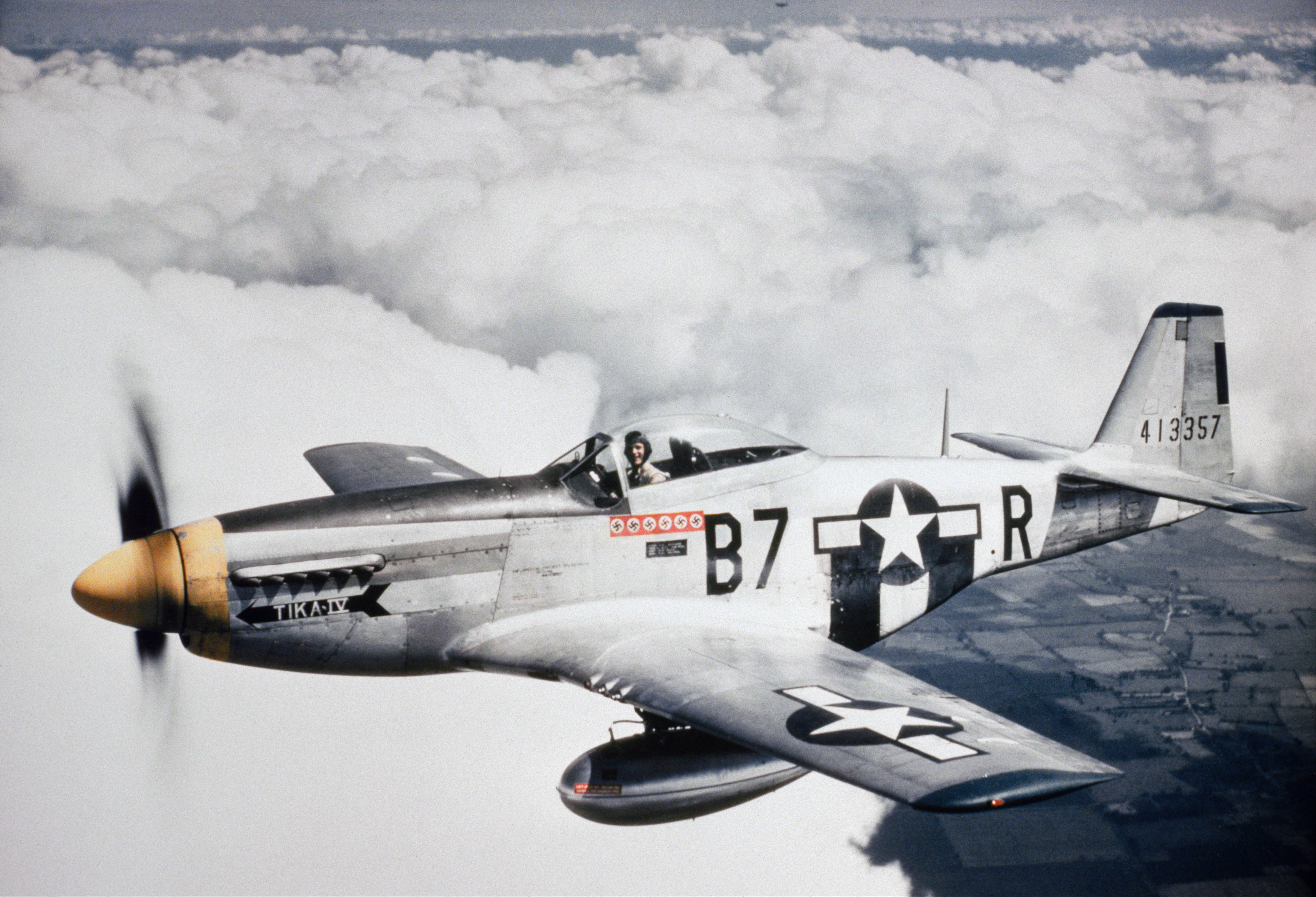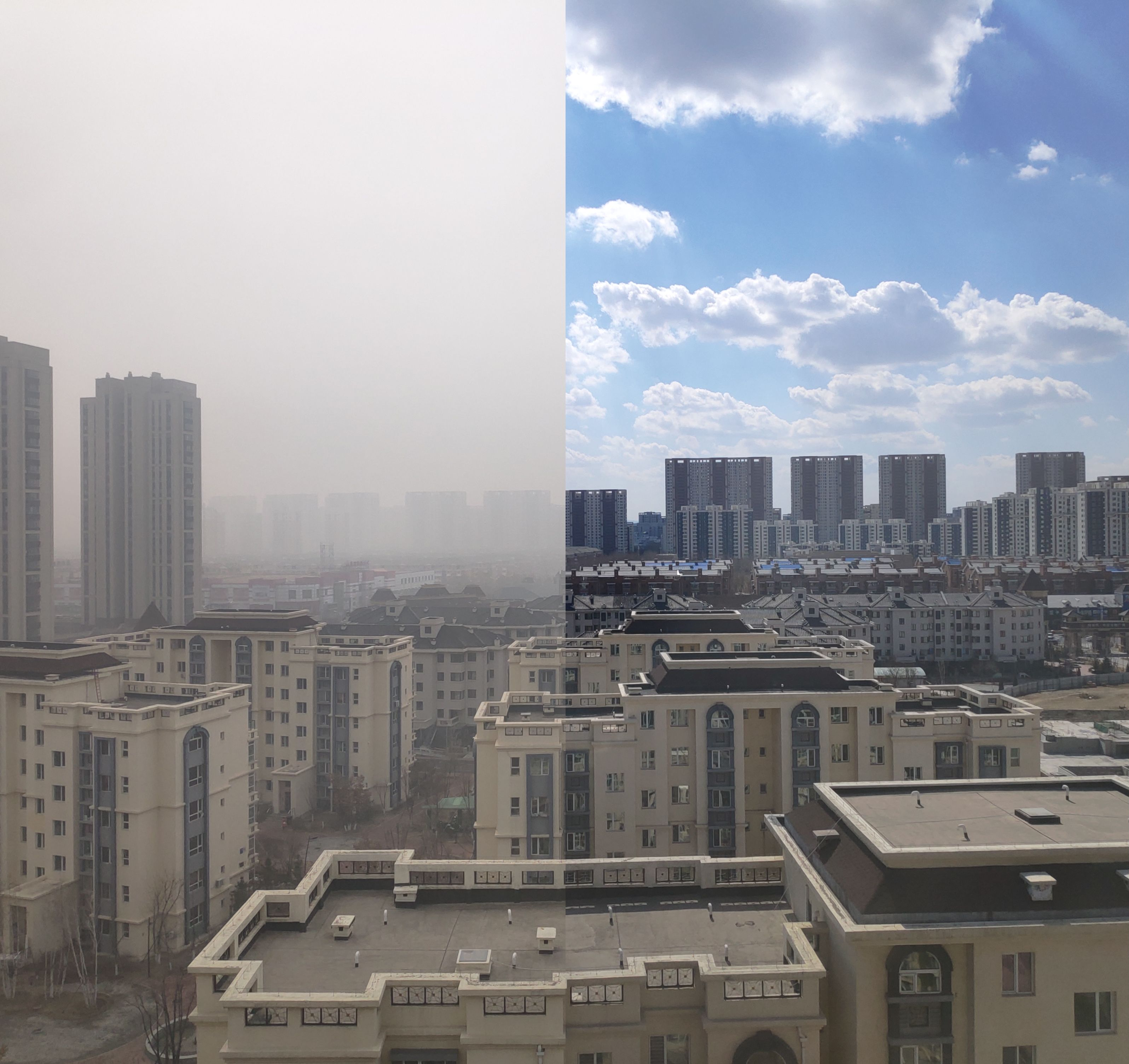|
Battle Of The Ruhr
The Battle of the Ruhr (5 March – 31 July 1943) was a strategic bombing campaign against the Ruhr Area in Nazi Germany carried out by RAF Bomber Command during the Second World War. The Ruhr was the main centre of German heavy industry with coke plants, steelworks, armaments factories and ten synthetic oil plants. The British attacked 26 targets identified in the Combined Bomber Offensive. Targets included the Krupp armament works (Essen), the Nordstern synthetic oil plant at Gelsenkirchen and the Rheinmetall–Borsig plant in Düsseldorf, which was evacuated during the battle. The battle included cities such as Cologne not in the Ruhr proper but which were in the larger Rhine-Ruhr region and considered part of the Ruhr industrial complex. Some targets were not sites of heavy industry but part of the production and movement of materiel. The Ruhr had been attacked by Bomber Command from 1940; its defences and the amounts of industrial pollutants produced a semi-permanen ... [...More Info...] [...Related Items...] OR: [Wikipedia] [Google] [Baidu] |
Ruhr Area
The Ruhr ( ; , also ''Ruhrpott'' ), also referred to as the Ruhr Area, sometimes Ruhr District, Ruhr Region, or Ruhr Valley, is a polycentric urban area in North Rhine-Westphalia, Germany. With a population density of 1,160/km2 and a population of over 5 million (2017), it is the largest urban area in Germany and the third of the European Union. It consists of several large cities bordered by the rivers Ruhr to the south, Rhine to the west, and Lippe to the north. In the southwest it borders the Bergisches Land. It is considered part of the larger Rhine-Ruhr metropolitan region of more than 10 million people, which is the third largest in Western Europe, behind only London and Paris. The Ruhr cities are, from west to east: Duisburg, Oberhausen, Bottrop, Mülheim an der Ruhr, Essen, Gelsenkirchen, Bochum, Herne, Hagen, Dortmund, Hamm and the districts of Wesel, Recklinghausen, Unna and Ennepe-Ruhr-Kreis. The most populous cities are Dortmund (with a population of app ... [...More Info...] [...Related Items...] OR: [Wikipedia] [Google] [Baidu] |
Combined Bomber Offensive
The Combined Bomber Offensive (CBO) was an Allied offensive of strategic bombing during World War II in Europe. The primary portion of the CBO was directed against Luftwaffe targets which were the highest priority from June 1943 to 1 April 1944. The subsequent highest priority campaigns were against V-weapon installations (June 1944) and petroleum, oil, and lubrication (POL) plants (September 1944). Additional CBO targets included railyards and other transportation targets, particularly prior to the invasion of Normandy and, along with army equipment, in the final stages of the war in Europe. The British bombing campaign was chiefly waged by night by large numbers of heavy bombers until the latter stages of the war when German fighter defences were so reduced that daylight bombing was possible without risking large losses. The US effort was by day – massed formations of bombers with escorting fighters. Together they made up a round-the-clock bombing effort except where wea ... [...More Info...] [...Related Items...] OR: [Wikipedia] [Google] [Baidu] |
Searchlights
A searchlight (or spotlight) is an apparatus that combines an extremely bright source (traditionally a carbon arc lamp) with a mirrored parabolic reflector to project a powerful beam of light of approximately parallel rays in a particular direction. It is usually constructed so that it can be swiveled about. The most common element used in modern searchlights is Xenon (Xe). However, Rare-earth elements such as lanthanum (La) and cerium (Ce) are used in phosphors to improve light quality in some specialized searchlights. Military use The first use of searchlights using carbon arc technology occurred during the Siege of Paris during the Franco-Prussian War. The Royal Navy used searchlights in 1882 to dazzle and prevent Egyptian forces from manning artillery batteries at Alexandria. Later that same year, the French and British forces landed troops under searchlights. By 1907 the value of searchlights had become widely recognized. One recent use was to assist attacks by t ... [...More Info...] [...Related Items...] OR: [Wikipedia] [Google] [Baidu] |
Anti-aircraft Guns
Anti-aircraft warfare (AAW) is the counter to aerial warfare and includes "all measures designed to nullify or reduce the effectiveness of hostile air action".AAP-6 It encompasses surface-based, subsurface ( submarine-launched), and air-based weapon systems, in addition to associated sensor systems, command and control arrangements, and passive measures (e.g. barrage balloons). It may be used to protect naval, ground, and air forces in any location. However, for most countries, the main effort has tended to be homeland defense. Missile defense is an extension of air defence, as are initiatives to adapt air defence to the task of intercepting any projectile in flight. Most modern anti-aircraft (AA) weapons systems are optimized for short-, medium-, or long-range air defence, although some systems may incorporate multiple weapons (such as both autocannons and surface-to-air missiles). 'Layered air defence' usually refers to multiple 'tiers' of air defence systems which, when ... [...More Info...] [...Related Items...] OR: [Wikipedia] [Google] [Baidu] |
Smog
Smog, or smoke fog, is a type of intense air pollution. The word "smog" was coined in the early 20th century, and is a portmanteau of the words ''smoke'' and ''fog'' to refer to smoky fog due to its opacity, and odour. The word was then intended to refer to what was sometimes known as pea soup fog, a familiar and serious problem in London from the 19th century to the mid-20th century, where it was commonly known as a London particular or London fog. This kind of visible air pollution is composed of nitrogen oxides, sulfur oxide, ozone, smoke and other Particulate matter, particulates. Man-made smog is derived from coal combustion emissions, vehicular emissions, industrial emissions, forest and agricultural fires and photochemical reactions of these emissions. Smog is often categorized as being either summer smog or winter smog. Summer smog is primarily associated with the photochemical formation of ozone. During the summer season when the temperatures are warmer and there is ... [...More Info...] [...Related Items...] OR: [Wikipedia] [Google] [Baidu] |
Air Pollution
Air pollution is the presence of substances in the Atmosphere of Earth, air that are harmful to humans, other living beings or the environment. Pollutants can be Gas, gases like Ground-level ozone, ozone or nitrogen oxides or small particles like soot and dust. It affects both outdoor air and indoor air. Natural sources of air pollution include Wildfire, wildfires, Dust storm, dust storms, and Volcanic eruption, volcanic eruptions. Indoor air pollution is often Energy poverty and cooking, caused by the use of biomass (e.g. wood) for cooking and heating. Outdoor air pollution comes from some industrial processes, the burning of Fossil fuel, fossil fuels for electricity and transport, waste management and agriculture. Many of the contributors of local air pollution, especially the burning of fossil fuels, also cause greenhouse gas emissions that cause climate change, global warming. Air pollution causes around 7 or 8 million deaths each year. It is a significant risk factor for ... [...More Info...] [...Related Items...] OR: [Wikipedia] [Google] [Baidu] |
Materiel
Materiel or matériel (; ) is supplies, equipment, and weapons in military supply-chain management, and typically supplies and equipment in a commerce, commercial supply chain management, supply chain context. Military In a military context, the term ''materiel'' refers either to the specific needs (excluding manpower) of a force to complete a specific military operation, mission, or the general sense of the needs (excluding manpower) of a functioning army. An important category of materiel is commonly referred to as ordnance, especially concerning mounted guns (artillery) and the shell (projectile), shells they consume. Along with fuel, and ammunition, munitions in general, the steady supply of ordnance is an ongoing logistical challenge in active combat zones. Materiel management consists of continuing actions relating to planning, organizing, directing, coordinating, controlling, and evaluating the application of resources to ensure the effective and economical support of ... [...More Info...] [...Related Items...] OR: [Wikipedia] [Google] [Baidu] |
Rhine-Ruhr
The Rhine-Ruhr metropolitan region () is the Metropolitan regions in Germany, largest metropolitan region in Germany, with over ten million inhabitants. A wikt:polycentric, polycentric conurbation with several major urban concentrations, the region covers an area of , entirely within the federal state of North Rhine-Westphalia. The Rhine-Ruhr metropolitan region spreads from the Ruhr, Ruhr area (Dortmund-Bochum-Essen-Duisburg) in the north to the urban areas of the cities of Mönchengladbach, Düsseldorf (the state capital), Wuppertal, Leverkusen, Cologne (the region's largest and Germany's fourth largest city), and Bonn in the south. The location of the Rhine-Ruhr at the heart of the European Blue Banana makes it well connected to other major European cities and metropolitan areas such as the Randstad, the Flemish Diamond and the Frankfurt Rhine Main Region. The metropolitan area is named after the Rhine and Ruhr (river), Ruhr rivers, which are the region's defining geographical ... [...More Info...] [...Related Items...] OR: [Wikipedia] [Google] [Baidu] |
Cologne
Cologne ( ; ; ) is the largest city of the States of Germany, German state of North Rhine-Westphalia and the List of cities in Germany by population, fourth-most populous city of Germany with nearly 1.1 million inhabitants in the city proper and over 3.1 million people in the Cologne Bonn Region, Cologne Bonn urban region. Cologne is also part of the Rhine-Ruhr metropolitan region, the List of EU metropolitan regions by GDP#2021 ranking of top four German metropolitan regions, second biggest metropolitan region by GDP in the European Union. Centered on the left bank of the Rhine, left (west) bank of the Rhine, Cologne is located on the River Rhine (Lower Rhine), about southeast of the North Rhine-Westphalia state capital Düsseldorf and northwest of Bonn, the former capital of West Germany. The city's medieval Cologne Cathedral () was the History of the world's tallest buildings#Churches and cathedrals: Tallest buildings between the 13th and 20th century, world's talles ... [...More Info...] [...Related Items...] OR: [Wikipedia] [Google] [Baidu] |
Düsseldorf
Düsseldorf is the capital city of North Rhine-Westphalia, the most populous state of Germany. It is the second-largest city in the state after Cologne and the List of cities in Germany with more than 100,000 inhabitants, seventh-largest city in Germany, with a 2022 population of 629,047. The Düssel, from which the city and the borough of Düsseltal take their name, divides into four separate branches within the city, each with its own mouth into the Rhine (Lower Rhine). Most of Düsseldorf lies on the right bank of the Rhine, and the city has grown together with Neuss, Ratingen, Meerbusch, Erkrath and Monheim am Rhein. Düsseldorf is the central city of the metropolitan region Rhine-Ruhr, the List of EU metropolitan regions by GDP#2021 ranking of top four German metropolitan regions, second biggest metropolitan region by GDP in the European Union, that stretches from Bonn via Cologne and Düsseldorf to the Ruhr (from Duisburg via Essen to Dortmund). The ''-dorf'' suffix mea ... [...More Info...] [...Related Items...] OR: [Wikipedia] [Google] [Baidu] |
Rheinmetall
Rheinmetall AG () is a German automotive and arms manufacturer, headquartered in Düsseldorf, Germany. The group was promoted to the DAX, Germany's leading stock market index, in March 2023. It is the largest German and fifth largest European arms manufacturer, and produces a variety of armored fighting vehicles and armored personnel carriers, in both wheeled and tracked versions. Its name is derived from the German-language words ''Rhein'' and ''Metall'', translating to "Rhine-metal" when combined. History Founding and early growth In April 1889, the Hörder Bergwerks- und Hütten-Verein founded the Rheinische Metallwaren- und Maschinenfabrik Aktiengesellschaft under General Director Josef Massenez, to produce ammunition for the German Empire. The Thuringian engineer Heinrich Ehrhardt (1840-1928) oversaw the construction of the Rheinmetall plant in Düsseldorf and managed it until 1920. He made many of his patents and inventions available to the company and contributed ... [...More Info...] [...Related Items...] OR: [Wikipedia] [Google] [Baidu] |
Gelsenkirchen
Gelsenkirchen (, , ; ) is the List of cities in Germany by population, 25th-most populous city of Germany and the 11th-most populous in the state of North Rhine-Westphalia with 262,528 (2016) inhabitants. On the Emscher, Emscher River (a tributary of the Rhine), it lies at the centre of the Ruhr, Ruhr area, the largest urban area of Germany, of which it is the fifth-largest city after Dortmund, Essen, Duisburg and Bochum. The Ruhr is located in the Rhine-Ruhr metropolitan region, the List of EU metropolitan regions by GDP#2021 ranking of top 4 German metropolitan regions, second-biggest metropolitan region by GDP in the European Union. Gelsenkirchen is the fifth-largest city of Westphalia after Dortmund, Bochum, Bielefeld and Münster, and it is one of the southernmost cities in the Low German dialect area. The city is home to the Association football, football club FC Schalke 04, Schalke 04, which is named after Gelsenkirchen-Schalke. The club's current stadium Veltins-Arena, h ... [...More Info...] [...Related Items...] OR: [Wikipedia] [Google] [Baidu] |









